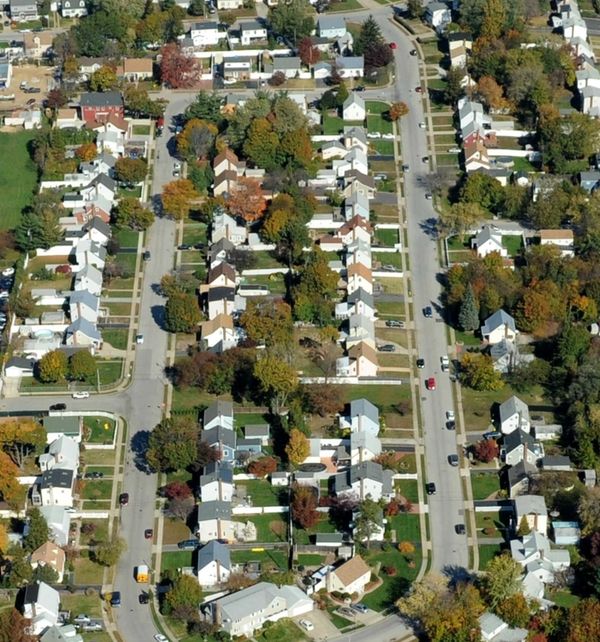New Neighborhood Homes Tax Credit Explained Infographic
Table of Content
Sign The American Property Owners Alliance petition to Congress urging them to support property owners and remove barriers to more affordable housing. In addition, homes must be located in areas where there is a poverty rate of at least 130% of the area poverty rate, the median family income is below 80% of the area median, and median home values are lower than the area median in order to be eligible for the credit. The White House indicated that would cover approximately 25% of all census tracts. The goal of the Neighborhood Homes Investment Act is to create a financing tool for single-family housing, as powerful as Low-Income Housing Tax Credit , to help transform neighborhoods across the country. Department of the Treasury and Internal Revenue Service, members of Congress and other federal and state agencies. The Olmsted firm had also been hired by the City of Boston to devise a plan for a grand avenue in the eastern part of Brighton that would link lower Commonwealth Avenue to the Chestnut Hill Reservoir.

The Aberdeen section of Brighton, which lies just outside of Cleveland Circle, contains some of the finest turn-of-the-century architecture in the City of Boston. Unfortunately, this unique concentration of high-style Medieval Revival, Queen Anne, Shingle, and Colonial Revival edifices has experienced a steady erosion in recent years at the hands of insensitive developers and absentee landlords. The reforms build on the findings in the report of the independent Commission on Local Tax Reform, in which the Commission said that to make a property tax fair, it would need to be more progressive and include extensive income-based relief based on households' ability to pay.
Neighborhood Homes Tax Credit
The tax credit, which aims to help revitalize historically marginalized communities, would help attract additional private investment in the rehabilitation of older homes and increase homeownership rates in low- and moderate-income communities. Qualified homeowners are those whose household incomes do not exceed 140 percent of the area median income, adjusting for household size as determined by the HUD Secretary. The administration’s support for the tax incentive mirrors the Neighborhood Homes Investment Act , which was reintroduced in both the Senate (S. 98) and the House (H.R. 2143) this Congress by Senators Ben Cardin (D-MD) and Rob Portman (R-OH) and Representative Brian Higgins (D-NY) respectively. Across the country, thousands of once-thriving urban and rural communities now struggle with stagnating or distressed neighborhoods and low homeownership rates. In many of these communities, single-family homes comprise most of the housing stock and many of these homes need substantial rehabilitation or replacement. Dilapidated homes have been abandoned, undermining neighborhood stability and the local tax base.

Although each council is responsible for setting their Council Tax rate, we have agreed with local government for increases to be capped at 3% in the financial years 2017 to 2018 and 2018 to 2019. To find out your property's council tax band, pay your bill, or apply for a discount or exemption, go to mygov.scot for more information. Modeled after the Low-Income Housing Tax Credit and the New Markets Tax Credit, state housing finance agencies would receive an annual allocation of Neighborhood Homes Tax Credits based on population. And while that is definitely a worthy strategy, it would take years to overcome the current shortages if that were the only plan of attack. This is a very exciting time in the City of Detroit with an abundance of economic and housing development occurring in the downtown and midtown area, while our neighborhoods still wait, patiently for its turn. As befits a neighborhood of such stylistic vitality, a number of architects resided in Aberdeen.
What specific problem will the Neighborhood Homes Investment Act address?
We’ve taken key information about the Neighborhood Homes Tax Credit and broken it down into a simple-to-digest visual. Assuming this new proposal passes, flipping homes could be an even more lucrative gig for investors than it is now, so it’s important to understand the ins and outs of the proposal. Discovering the most effective, impactful and efficient use of the tax credit with various business models. Access to conceptual models and analysis to assist in the understanding of the value of the tax credit. The ability to cost share in resolving similar issues more efficiently as a group rather than having to address them individually. The ability to keep abreast of emerging issues and provide input for shaping proposed rulemaking so that the rules and markets work well together.

Another interesting early resident was Andrew Morton, a wealthy manufacturer of steam and gas fixtures. The Mortons lived originally at 358 Chestnut Hill Avenue, in a house facing Cleveland Circle. About 1900, however, they moved to an elaborate new residence at 248 Chestnut Hill Avenue in the so-called “New Aberdeen Section,” the area west of Commonwealth Avenue. Morton hired the great landscape architect Frederick Law Olmsted to lay out the grounds of his new residence.
www.congress.gov
One of these houses, 1642 Commonwealth Avenue , is conspicuously sited and handsomely landscaped. The other Munroe houses, at 4 and 8 Egremont Road, though less conspicuous, are equally magnificent. The architect of all three of these edifices was Harry M. Ramsey, an Allston-Brighton resident. Large-scale residential development of Brighton’s Aberdeen Section began with the introduction, in 1889, of electric-powered streetcar service along Beacon Street. Service to Reservoir Station by train had been relatively inconvenient, cars running only once an hour.
The NHTC Working Group was created to identify and address technical and administrative issues that arise under the federal Neighborhood Homes Tax Credit. Tax credits will provide a powerful incentive for the private sector to build and rehabilitate homes to lift up struggling neighborhoods. Unlike a grant program, the NHIA tax credit would pay only for “success” because the credit is only applied after construction is completed and a qualified homeowner occupies the house. In addition, the NHIA tax credit will fill only the actual value gap, as determined by the market. If a home sells for more than the cost of the development, no tax credits will be used. The private sector shoulders the key risks, such as the possibility that project does not get completed or a qualified homeowner does not purchase it.
White House Reiterates Support for the Neighborhood Homes Tax Credit
Because the city dragged its feet on this project, it was not carried into effect until the early 1890s. Once completed, however, electric streetcar service was also installed along this second grand boulevard, Commonwealth Avenue. Thus, by the late 1890s, two major avenues, both serviced by electric streetcar lines, ran along the periphery of the Aberdeen section. The reforms address the inherent unfairness of the original council tax system, which determined that lower-banded properties paid more as a proportion of property value than households in the higher valuation bands. By the end of financial year 2018 to 2019, we will have invested more than £1.4 billion in CTR. In 2017, we extended the CTR scheme to deliver greater relief to households with children, and to provide relief for low to middle income households from the impact of the council tax reforms on properties in bands E - H.
The NHIA could lead to the revitalization of 500,000 homes and create $100 billion in development revenue over the next 10 years. About 22% of metro areas nationwide and 25% of non-metro areas qualify for NHIA investments. NHIA targets neighborhoods that have poverty rates that are 130% or greater than the metro or state rate; have incomes that are 80% or less that area median income; and have home values that are below the metro or state median value. The Neighborhood Homes Investment Act calls for the creation of a new federal tax credit that will produce new equity investment dollars for the development and renovation of 1-4 family housing in distressed urban, suburban, and rural neighborhoods. A property is exempted from council tax where all adult residents of the household are care leavers, students, school leavers or those affected by a severe mental impairment. Care leavers are also disregarded from the calculation of the number of adult residents of a household for Council Tax discount purposes.
Sponsors would use the tax credits to raise equity capital from investors and oversee the development and marketing of the homes. Investors – not the federal government – would assume construction and marketing risk. Investors would receive tax credits only after the construction or rehabilitation work is completed and the property is occupied by an eligible homeowner. “The Neighborhood Homes Investment Act will help address the housing affordability crisis, create jobs, and encourage economic development during these tough times.
This policy would help areas where the cost of renovating or constructing a home exceeds the market price that homes can be sold for - resulting in an "appraisal gap." With the new tax credit, investors have the opportunity to reduce their annual tax payment if they’ve rehabbed an older home that fits the list of criteria. In a nutshell, these homes must be located in a gentrifying area, the homebuyers must fit the income profile of the neighborhood, and the sales price must not exceed four times the area median family income. As mentioned earlier, these tax credits would cover the difference between total development costs and the sales price. This would, for example, make it financially viable to spend $120,000 acquiring and rehabilitating a vacant property that would only sell for $100,000 on the open market by offering a $20,000 tax credit to cover the difference.
Electric streetcars, by contrast, began operating at 6 a.m., and ran at convenient 10 minute intervals during the busiest hours of the day. In 1886 the greatest impediment to development was removed when Henry M. Whitney, the President of the West End Street Railway Company, and a major owner of Beacon Street real estate, hired renowned landscape architect Frederick Law Olmsted, to widen and improve that thoroughfare. Over the next two years, Olmsted replaced the rough country lane with a spectacular 160 foot wide paved Parisian style avenue. Many young people leaving care require support to manage the effects of their pre-care and in-care experiences as they make the transition into adulthood and independent living.
Introduced in 1993 by the Local Government Finance Act 1992, Council Tax is a system of property taxation that is levied locally on each domestic property in Scotland. This 3% cap helps to protect household incomes while ensuring local authorities continue to be properly funded. Across the country, just 49 percent of Hispanic Americans and 45 percent of Black Americans own their own homes, compared to 74 percent of White Americans. Traffic Scotland is here to ensure road users are provided with current and reliable information regarding the Trunk Road Network. We aim to ensure the travelling public have all available facts to make an informed decision about their journey. D. Mitchell, and dating from 1899, sits high off the street on a piece of ledge.
Comments
Post a Comment